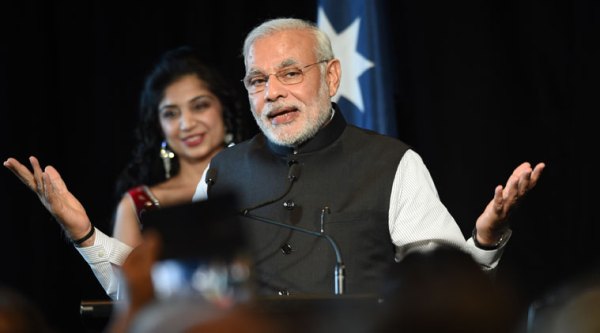Posted: November 21, 2014 12:10 am

The last time an Indian prime minister traveled to Fiji was in 1981, when Indira Gandhi arrived there.
Prime Minister Narendra Modi’s decision to visit Fiji after his pre-scheduled trips to Myanmar and Australia was indeed a surprise. This underlines the new commitment in New Delhi to bridging the gap between the potential and reality of Delhi’s reach in the Indo-Pacific. The last time an Indian prime minister traveled to Fiji was in 1981, when Indira Gandhi arrived there. Since then, much has happened in Fiji and around it. The intensification of ethnic conflict in Fiji between Indian immigrants and the native populations saw Delhi focus exclusively on securing the interests of the diaspora. The many coups in Fiji and the discrimination against the Indian community there led to Delhi’s efforts to isolate the government and lose its broader influence in the island. Modi’s visit comes in the wake of the UPA government’s decision to begin constructive engagement of Fiji a few years ago.
In the island itself, the elections earlier this year saw the strongman Frank Bainimarama shed his military uniform and win a democratic election with the support of ethnic minorities, including sections of the Indian community. If the restoration of democracy in Fiji set a positive context for Modi’s visit, the PM announced a number of steps to boost India’s relationship with Suva. This included the expansion of India’s development partnership with Fiji, improving air links and announcing visa on arrival for the citizens of Fiji.
Fiji Looks North
The diaspora is not the only reason that has taken Modi to Fiji. Long seen as the backwaters of global politics, the region has increasingly become an important theatre in the emerging great power contestation in the Indo-Pacific. As elsewhere, the rapid rise of China and its intensive outreach to the islands in the last few years has stirred other major powers into action. What began initially as a competition with Taiwan for diplomatic recognition among the island states has now acquired an intensive strategic dimension.
With their vast exclusive economic zones, the Pacific Islands occupy millions of square kilometres of ocean space and straddle vital sea lines of communication. Some provide ideal vantage points for military power projection. They are also important locations for gathering signal intelligence and monitoring outer space activity. Guam, for example, is now critical for the maintenance of American forward military presence in the Pacific. The US also tests many of its “star wars” systems in the littoral.
For China, which seeks to expand its own strategic influence in the Pacific, limit American military primacy in the region and gain access to the rich natural resources of the littoral, the Pacific Islands have become an important priority. The last few years have seen China step up its presence through massive aid programmes, civilian as well as military, and frequent deployment of its naval units and the development of maritime infrastructure in the region. China also built a satellite-tracking station in Kiribati which, of course, was dismantled when the island switched its allegiance to Taiwan.
China’s interest has given the islands more strategic options in their international relations and the means to resist political pressures from Australia and New Zealand. Fiji has consciously articulated a “look north” policy and played the China card with considerable deftness. With China raising its profile in the south Pacific, the US has ended its post-Cold War neglect of the islands and is back in play. Japan, too, is now committed to doing more for the islands. Australia and New Zealand, which had a free hand in the region after the Cold War, are now recalibrating their policies.
India Card
Hours after Modi left Fiji, Bainimarama was hosting Chinese President Xi Jinping. Xi is no stranger to the region, having visited the littoral as vice president a few years ago. Fiji and the other islands are eager for a strong Indian presence in the littoral. They know that India can’t match the Chinese, dollar to dollar, in providing economic assistance. The islanders have no desire to switch from a dependence on the West to a total reliance on China. India’s presence offers the prospect of greater regional balance in the south Pacific and offers more economic and political choices to the island states.
In meeting all the leaders of the Pacific Islands, promising to make the joint forum a regular affair, enhancing India’s economic assistance programmes and unveiling defence cooperation with Fiji, Modi has demonstrated that India is ready to turn its historic links with the south Pacific into a strategic partnership.
The writer is a distinguished fellow at the Observer Research Foundation and a contributing editor for ‘The Indian Express’

No comments:
Post a Comment